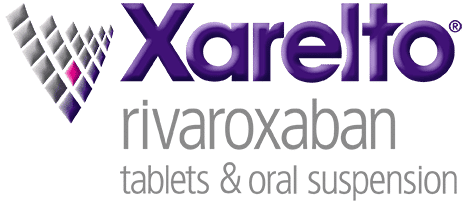Request Demo
Last update 08 May 2025
HIV Seropositivity
Last update 08 May 2025
Basic Info
Synonyms AIDS Seroconversion, AIDS Seroconversions, AIDS Seropositivities + [105] |
Introduction Development of neutralizing antibodies in individuals who have been exposed to the human immunodeficiency virus (HIV/HTLV-III/LAV). |
Related
34
Drugs associated with HIV SeropositivityTarget |
Mechanism HIV-1 integrase inhibitors [+1] |
Active Org. |
Originator Org. |
Active Indication |
Inactive Indication- |
Drug Highest PhaseApproved |
First Approval Ctry. / Loc. Canada |
First Approval Date18 Mar 2020 |
Target |
Mechanism Voltage-gated sodium channels blockers |
Active Org. |
Originator Org. |
Inactive Indication |
Drug Highest PhaseApproved |
First Approval Ctry. / Loc. United States |
First Approval Date21 Nov 2019 |
Target |
Mechanism HIV-1 integrase inhibitors [+1] |
Active Org. |
Originator Org. |
Active Indication |
Inactive Indication |
Drug Highest PhaseApproved |
First Approval Ctry. / Loc. United States |
First Approval Date08 Apr 2019 |
268
Clinical Trials associated with HIV SeropositivityNCT06857071
Site-randomized Trial of a Novel Social Network Recruitment Intervention to Locate More Undiagnosed Positive Cases of HIV, Increase HIV Testing Among Men, and Reduce HIV-related Stigma in South Africa (E-SNRHT South Africa)
In South Africa's large generalized HIV epidemic, male-to-female transmission comprises a large proportion of transmission events, but men are much less likely to seek HIV testing, and disproportionately remain undiagnosed. HIV-related stigma is a key barrier to recruiting men to HIV testing in South Africa, as they report feeling blamed by their partners and communities for HIV transmission. This barrier must be addressed to increase testing among men and other testing-avoidant people in order to locate "hard-to-reach" undiagnosed cases and make progress towards 95-95-95 goals. Peer recruitment via social networks is an effective mechanism for promoting HIV testing, because people seek health information from peers, and peers influence health behavior norms within networks. However, standard risk network recruitment is limited in that: 1) recruiting one's own risk partners can trigger stigma and blame for HIV; and 2) it excludes people who have not engaged in HIV risk behavior recently and/or who no longer have contact with their risk partners. The Investigative Team for the present study developed an expanded social network recruitment to HIV testing (E-SNRHT) intervention to address these limitations and reduce stigma as a barrier to testing. E-SNRHT asks "seeds" (i.e., initial participants) who have been newly diagnosed with HIV (NDH) to recruit their expanded social network members (i.e., anyone they know) who they think could benefit from HIV testing or could have an undiagnosed HIV infection, tests these network members, and refers them to ART (if positive) or follow-up testing (if negative). By asking participants to recruit non-risk partners, E-SNRHT is designed to increase their comfort and likelihood of recruiting others, especially those who have avoided testing due to stigma. The Investigative Team's two previous pilot studies of E-SNRHT found that it recruits men to HIV testing at much higher rates than standard risk network recruitment; locates people with newly diagnosed HIV (PNDH; i.e., people with previously undiagnosed HIV infection) at a much higher rate per seed than standard risk network recruitment; and recruits people who have not tested in years, have never tested, and/or have not engaged in HIV risk behavior recently but have undiagnosed HIV infection. These pilot studies also found that E-SNRHT reduces HIV-related stigma and increases HIV-related social support among networks; and that 76% of E-SNRHT participants who were NDH started ART within 10 weeks. As participants recruit each other, their discussions help to normalize talking about HIV, thereby improving levels of stigma and support, which in turn should increase HIV service use and improve HIV care cascade outcomes. The present study will conduct a site-randomized trial of E-SNRHT, with 32 Department of Health clinics in KwaZulu-Natal, South Africa serving as sites. This study will compare E-SNRHT clinics to business-as-usual control clinics on: their rates of recruiting men to testing (Aim 1a) and locating PNDH (1b); participants' reports of HIV-related stigma and social support (Aim 2a); and treatment cascade outcomes (2b). Implementation science methods and qualitative methods will also be used to develop best practices (Aim 3) for future scale-up in South Africa and adaptation to other settings.
Start Date01 Oct 2025 |
Sponsor / Collaborator |
NCT06940375
Construction of Prediction Models for Metabolic - Associated Fatty Liver Disease and Liver Fibrosis in HIV - Infected Individuals
Antiretroviral therapy can effectively control the replication of HIV, prolong the lifespan of patients infected with HIV, and improve their quality of life.At the same time, non-AIDS-related diseases such as diabetes and chronic liver diseases are increasing day by day.Metabolic associated fatty liver disease (MAFLD) is a chronic progressive liver disease caused by overnutrition and insulin resistance in genetically susceptible individuals. It was formerly known as non-alcoholic fatty liver disease (NAFLD).With the continuous improvement of living standards and the constant change of lifestyles, the incidence of metabolic associated fatty liver disease is gradually increasing. Metabolic associated steatohepatitis (MASH) may further develop into liver cirrhosis, liver failure and hepatocellular carcinoma, and is the third most common cause of liver transplantation.
In HIV patients, early identification of significant liver fibrosis and MASH with fibrosis is of vital importance.However, due to the fact that the pathogenesis of liver fibrosis in HIV patients is more complex than that in the general population, it involves multiple factors such as the virus, reverse transcriptase drugs, chronic inflammation, and immune disorders.However, the current clinical research on metabolic-related fatty liver fibrosis in people with HIV is still rather limited.
In HIV patients, early identification of significant liver fibrosis and MASH with fibrosis is of vital importance.However, due to the fact that the pathogenesis of liver fibrosis in HIV patients is more complex than that in the general population, it involves multiple factors such as the virus, reverse transcriptase drugs, chronic inflammation, and immune disorders.However, the current clinical research on metabolic-related fatty liver fibrosis in people with HIV is still rather limited.
Start Date01 May 2025 |
Sponsor / Collaborator |
NCT06799650
Clinical Study to Evaluate the Efficacy and Safety of Gammora® in Addition to Standard Antiretroviral Treatment for HIV Infection in Antiretroviral Treatment-Naïve Participants
The goal of this phase II, open-label, randomized, controlled clinical trial is to evaluate the impact of Gammora®, a 16-mer HIV integrase-derived peptide associated with a boosted darunavir antiretroviral regimen compared Gammora® arm) to a boosted darunavir antiretroviral regimen only (control arm) in the estimated HIV reservoir among antiretroviral naïve people living with HIV. The main questions it aims to answer are:
1. Will the proviral (total) HIV-1 DNA decrease rapidly in the Gammora® arm compared to the control arm?
2. Will the apoptosis markers evaluated in the CD4+ T cell by flow cytometry increase in the Gammora® arm compared to the control arm? Forty antiretroviral naïve viremic people with HIV with CD4+ T cell counts >350 cells/mL will be randomized to receive 20 mg of Gammora® in 2mL SC solution plus Tenofovir/3TC and Darunavir 800mg+Ritonavir 100mg (Gammora® arm) or antiretroviral only (control arm). In the Gammora® arm, participants had a 2-week Gammora® monotherapy lead-in period with Gammora® given daily before antiretroviral treatment is started, followed by 12 weeks of antiretroviral therapy plus Gammora® given every other day. The first two weeks of the trial (lead-in period for the Gammora® arm) were labeled w-2 and w-1 for both groups, and blood samples were collected for both groups. w0 denotes the week ART was started in both arms.
1. Will the proviral (total) HIV-1 DNA decrease rapidly in the Gammora® arm compared to the control arm?
2. Will the apoptosis markers evaluated in the CD4+ T cell by flow cytometry increase in the Gammora® arm compared to the control arm? Forty antiretroviral naïve viremic people with HIV with CD4+ T cell counts >350 cells/mL will be randomized to receive 20 mg of Gammora® in 2mL SC solution plus Tenofovir/3TC and Darunavir 800mg+Ritonavir 100mg (Gammora® arm) or antiretroviral only (control arm). In the Gammora® arm, participants had a 2-week Gammora® monotherapy lead-in period with Gammora® given daily before antiretroviral treatment is started, followed by 12 weeks of antiretroviral therapy plus Gammora® given every other day. The first two weeks of the trial (lead-in period for the Gammora® arm) were labeled w-2 and w-1 for both groups, and blood samples were collected for both groups. w0 denotes the week ART was started in both arms.
Start Date01 Jan 2025 |
Sponsor / Collaborator |
100 Clinical Results associated with HIV Seropositivity
Login to view more data
100 Translational Medicine associated with HIV Seropositivity
Login to view more data
0 Patents (Medical) associated with HIV Seropositivity
Login to view more data
3,140
Literatures (Medical) associated with HIV Seropositivity01 Apr 2025·The Journal of Clinical Pharmacology
Population Pharmacokinetic Simulations for Dose Optimization of Tenofovir Disoproxil Fumarate in HIV‐Infected Patients with Moderate‐to‐Severe Renal Impairment
Article
Author: Saengpraphanan, Chananan ; Plaengnok, Rungrawin ; Weeket, Pinmanee ; Rattanakul, Thanawan ; Singkham, Noppaket ; Boonpeng, Apinya ; Wutthikul, Chanadda
01 Apr 2025·European Journal of Neuroscience
Assessing Glymphatic Function, Global Brain Activity, and Cognitive Performance in Adolescents Living With Perinatal HIV Exposure
Article
Author: Feng, Ling ; Yu, Xiao ; Gao, Lei ; Yin, Zhuang ; Xu, Dan
01 Mar 2025·Transplant Infectious Disease
Critical Insights: Severe Outcomes of Pneumocystis Pneumonia: A 10‐year Retrospective Cohort Study
Article
Author: Poutanen, Susan Marie ; Solera Rallo, Javier Tomas ; Albasata, Hanan ; Hosseini‐Moghaddam, Seyed M ; Winichakoon, Poramed
7
News (Medical) associated with HIV Seropositivity27 Oct 2023
Training series highlights solutions for HIV, PrEP/PEP and COVID-19 vaccine screenings
in primary care
WASHINGTON, Oct. 27, 2023 /PRNewswire/ -- The George Washington University School of Medicine and Health Sciences (SMHS) is hosting a free webinar on November 1st to discuss the issue of clinician burnout and how it can be addressed through emergent infections. The webinar is a part of a training series for the Two in One: HIV + COVID Screening and Testing Model, a national medical education program, and will feature Leon McCrea II, MD, MPH, senior associate dean of diversity, equity and inclusion at Drexel University, and Annette Gadegbeku, MD, associate dean of community health at Drexel University College of Medicine and an associate professor in the department of family, community & preventive medicine and chief of the division of community health.
"Clinician burnout is one of the biggest issues facing healthcare today and it became exacerbated with the COVID-19 pandemic," said Maranda Ward, EdD, MPH, principal investigator of the Two in One Model and assistant professor of clinical research and leadership at GW SMHS. "Recognizing clinician burnout is the first step in addressing the issue, but we also need to understand the emerging threats that clinicians may face in the future and be ready with strategies to protect clinicians."
The event is entitled "Combating PCP Burnout with Emergent Infections." During the webinar, attendees will learn about emergent infections that clinicians have had to become familiar with; learn how to recognize signs of clinician burnout; and list strategies to combat clinician burnout through addressing a range of emergent infections.
The webinar is scheduled for November 1, from 12 – 1 p.m. ET. Anyone can register for the event here.
This is the ninth webinar in the Two in One Model training series, which utilizes a combined health and racial equity lens to provide primary care practitioners the tools to routinize HIV, PrEP/PEP, and COVID vaccine screenings for all patients and to better engage in culturally responsive communication with their minoritized patients. The series includes nine live-streamed continuing medical education (CME) lectures as well as an asynchronous CME-bearing module-based training course and Patient Care toolkit. The program is actively engaged in formulating policy recommendations for adjusting clinical guidelines on COVID vaccine, HIV and PrEP/PEP screenings.
This program has been supported by an independent educational grant from Gilead Sciences, Inc. For more information on this research-informed model, visit the Two-in-One website at: twoinone.smhs.gwu.edu.
SOURCE The George Washington University School of Medicine and Health Sciences
VaccineClinical Study
11 Oct 2023
Training series highlights solutions for HIV, PrEP/PEP and COVID-19 vaccine screenings
in primary care
WASHINGTON, Oct. 11, 2023 /PRNewswire/ -- The George Washington University School of Medicine and Health Sciences (SMHS) is hosting a free webinar on October 25 to discuss culturally responsive communication in the primary care setting. The webinar is a part of a training series for the Two in One: HIV + COVID Screening and Testing Model, a national medical education program, and will feature Joaquín Carcaño, director of community organizing at the Latino Commission on AIDS.
"Primary care practitioners need to ensure that they are meeting patients where they are, and are aware of language and literacy gaps," said Maranda Ward, EdD, MPH, principal investigator of the Two in One Model and assistant professor of clinical research and leadership at GW SMHS. "We are excited to hear from Joaquín Carcaño and learn about another dimension of culturally responsive communication in the primary care setting."
The event is entitled "Culturally Responsive Communication, Part III: Language and Literacy Access." During the webinar, attendees will continue to learn about how culturally responsive communication can support and uplift racial, ethnic, sexual and gender minoritized patients. Additionally, the webinar will provide primary care practitioners with the tools to navigate the language and literacy needs of their patients.
The webinar is scheduled for October 25, from 12 – 1 p.m. ET. Anyone can register for the event here.
This is the eighth webinar in the Two in One Model training series, which utilizes a combined health and racial equity lens to provide primary care practitioners the tools to routinize HIV, PrEP/PEP, and COVID vaccine screenings for all patients and to better engage in culturally responsive communication with their minoritized patients. The series will ultimately offer nine live-streamed continuing medical education (CME) lectures as well as an asynchronous CME-bearing module-based training course and Patient Care toolkit. The program is actively engaged in formulating policy recommendations for adjusting clinical guidelines on COVID vaccine, HIV and PrEP/PEP screenings.
This program has been supported by an independent educational grant from Gilead Sciences, Inc. For more information on this research-informed model, visit the Two-in-One website at: twoinone.smhs.gwu.edu.
SOURCE The George Washington University School of Medicine and Health Sciences
VaccineClinical Study
06 Sep 2023
Training series highlights solutions for HIV and COVID-19 screenings in primary care
WASHINGTON, Sept. 6, 2023 /PRNewswire/ -- The George Washington University School of Medicine and Health Sciences (SMHS) is hosting a free webinar on September 20 to discuss culturally responsive communication with patients. The webinar is a part of a training series for the Two in One: HIV + COVID Screening and Testing Model, a national medical education program, and will feature Adedotun Ogunbajo, PhD, of Harvard's Center for Population and Development Studies and Elder George Kerr III of the Washington D.C. Center for AIDS Research.
"For the Two in One program's second webinar on the topic of culturally responsive communication, we will emphasize how clinicians can share power with patients," said Maranda Ward, EdD, MPH, principal investigator of the Two in One Model and assistant professor of clinical research and leadership at GW SMHS. "In addition to discussing ways to facilitate culturally responsive communication, we will review what sharing power in the clinician-patient interaction looks like."
The event is entitled "Culturally Responsive Communication, Part II: Sharing Power with Patients," and is scheduled for September 20, from 12 p.m. – 1 p.m. ET. Anyone can register for the event here.
This is the sixth webinar in the Two in One Model training series, which utilizes a combined health and racial equity lens to provide primary care practitioners the tools to routinize HIV, PrEP/PEP, and COVID vaccine screenings for all patients to better engage in culturally responsive communication with their racial, ethnic, sexual, and gender-minoritized patients.
The series will ultimately offer nine live-streamed continuing medical education (CME) lectures as well as an asynchronous CME-bearing module-based training course and PCP toolkit. The program is actively engaged in formulating policy recommendations for adjusting clinical guidelines on COVID vaccine, HIV and PrEP/PEP screenings.
This program has been supported by an independent educational grant from Gilead Sciences, Inc. For more information on this research-informed model, visit the Two-in-One website at: twoinone.smhs.gwu.edu.
SOURCE The George Washington University School of Medicine and Health Sciences
VaccineClinical Study
Analysis
Perform a panoramic analysis of this field.
login
or

AI Agents Built for Biopharma Breakthroughs
Accelerate discovery. Empower decisions. Transform outcomes.
Get started for free today!
Accelerate Strategic R&D decision making with Synapse, PatSnap’s AI-powered Connected Innovation Intelligence Platform Built for Life Sciences Professionals.
Start your data trial now!
Synapse data is also accessible to external entities via APIs or data packages. Empower better decisions with the latest in pharmaceutical intelligence.
Bio
Bio Sequences Search & Analysis
Sign up for free
Chemical
Chemical Structures Search & Analysis
Sign up for free







